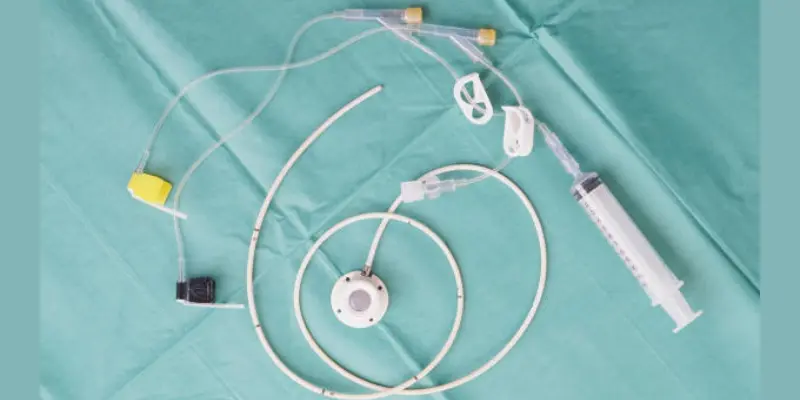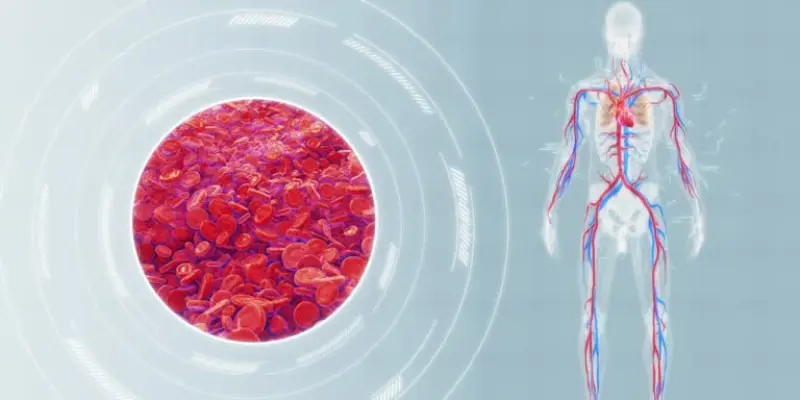Smart Catheters for Urology: How AI Makes a Difference
Published: 9 May 2025
Have you ever heard of a catheter? It’s a small, flexible tube that helps drain urine when someone can’t do it on their own. Doctors often use it for patients after surgery or those with bladder problems. But regular catheters can sometimes cause pain or infections which can be overlooked. Smart catheters make sure there should not be infections during the process.
Now, imagine if your catheter could warn you before an infection starts. Or tell your doctor when something’s wrong without needing to visit the hospital. Sounds amazing, right? This is where Artificial Intelligence (AI) steps in. AI helps smart catheters learn what’s normal for your body and spot problems early. It’s like giving your medical device a brain.
In this post, I will show you how AI is changing urology care. You will see how these smart tools work, how they help patients and what the future might look like. Ready to explore?

What Are Smart Catheters?
Let’s keep it simple. A smart catheter is just like a regular catheter but with extra power. It doesn’t just drain urine. It also collects important health data and sends alerts if something goes wrong.
How Is It Different?
Regular catheters only do one job. They let urine flow out of the body. But smart catheters can do much more. They have tiny sensors built inside. These sensors can:
- Measure urine flow
- Check temperature
- Spot signs of infection
- Send data to a computer or phone
It’s like turning a simple tube into a smart health device!
Suggested Article: AI Catheters For Heart Care
Easy Example
Think of it like this:
A regular catheter is like a basic flashlight. A smart catheter is like a flashlight with a sensor, battery check and auto shut-off. It’s smarter, safer and more helpful.
Where Are They Used?
Smart catheters are used mostly in urology—the medical field that deals with the urinary system. Doctors use them when someone:
- Has trouble emptying their bladder
- Needs help after surgery
- Has a long-term health condition
In these cases, smart catheters help doctors to track how the body is doing without needing to guess.
How AI Powers Smart Catheters
Smart catheters are helpful on their own. But when you add Artificial Intelligence, they get even better. AI helps these catheters think, learn and react—just like a helpful assistant.
What Does AI Do?
AI works like a smart brain inside the catheter system. It reads the data collected by the sensors and looks for signs that something might be wrong.
Here’s how it helps:
- Watches for patterns
It learns what’s normal for your body and notices changes.
(Example: It sees when urine flow slows down.) - Spots trouble early
AI can detect signs of a problem before it becomes serious.
(Example: It finds a small temperature rise that might mean an infection.) - Sends alerts to doctors or nurses
No more waiting for symptoms. The system sends a message right away.

Also Read: Top 5 AI Robotic Catheter Systems in This Year
Real-Time Help
AI works in real time. That means it checks your body all the time, not just during check-ups. It can help:
- Prevent infections
- Stop blockages before they get worse
- Avoid emergency room visits
Personalized for You
One big advantage of AI is that it learns from each patient. The more data it collects, the better it understands what’s normal for you. This means better and safer care made just for your needs.
Related Article: AI vs Traditional Catheterization Methods
Benefits of AI-Enabled Smart Catheters
Smart catheters already help patients in big ways. But when we add AI, the benefits grow even more. Let’s look at how these advanced tools make life easier for patients and doctors.
1. Detects Infections Early
Urinary tract infections (UTIs) are common in patients using catheters. But smart catheters with AI can catch the warning signs early.
How?
AI watches for small changes like higher temperature or cloudy urine. Then it sends an alert to your doctor who acts early. This early action means fewer problems and faster healing.
2. Improves Comfort and Safety
AI tracks what’s happening inside the body and helps to avoid catheter problems.
Example:
If the flow stops or the bladder feels too full, AI can signal an issue before you feel pain.
This reduces:
- Discomfort
- Swelling
- Emergency situations
3. Helps Doctors Make Better Decisions
Doctors don’t have to rely only on patient reports. The smart catheter sends real-time data directly to them.
Benefit:
They get clear and accurate updates. This helps them treat patients faster and with more accuracy.
4. Reduces Healthcare Costs
When problems are caught early, patients stay out of the hospital.
Result:
- Fewer hospital stays
- Lower risk of infections
- Less money spent on treatment
5. Gives Peace of Mind
Patients feel more confident knowing the catheter is smart and alert.
Imagine this:
You are resting at home and the AI system is quietly watching your health in the background. That’s peace of mind you can trust.
Challenges and What’s Next
While smart catheters with AI bring many benefits but still they are not perfect. There are still some challenges we need to think about. Let’s look at these challenges and what the future holds.
1. Still New Technology
Smart catheters with AI are still new. Not every hospital or clinic uses them yet. Many places are still learning about how to use them well.
Why it matters:
It might take time for all doctors and patients to get used to this new way of care. The technology needs to be tested in more places to make sure it’s safe and helpful.
2. Cost and Training
Smart catheters can be expensive. Hospitals and clinics need to invest in these tools and train staff to use them.
Why it matters:
This means it might be a while before every doctor can offer this service. But as technology gets more common, the prices will likely drop.
3. The Future of Urology Care
The good news is that AI is just getting started. Soon, we might see even more amazing tools for urology care. Also when this technology becomes more advanced and common we can expect a huge drop in the cost in future.
What’s next?
- Self-cleaning catheters that don’t need as much maintenance.
- Wireless monitoring that lets patients track their health from home.
- Smarter AI that helps the doctors to make even better decisions faster.
Conclusion
So guys! In this article, we’ve covered Smart AI Catheters for Urology in detail. These smart devices are truly transforming urology care by offering earlier detection, greater comfort and better safety. If you or a loved one is dealing with bladder issues, I highly recommend talking to your healthcare provider about the possibility of using a smart catheter. It could make a real difference in your care. Don’t wait and take control of your health today!
Your Common Queries – Answered
Here are frequently asked questions about AI Catheters for Urology:
Smart catheters typically cost 3-5 times more than traditional catheters due to their embedded sensors and AI technology. However, many insurance plans are beginning to cover them as preventative care. The long-term savings from fewer complications and hospital visits often outweigh the initial higher cost.
Smart catheters are designed for both hospital and home use with proper training. Patients receive a companion app that connects to their device and monitors data. A healthcare provider will help set up the system and teach you how to respond to alerts.
Most smart catheters need replacement every 2-4 weeks, similar to traditional indwelling catheters. The exact duration depends on the specific model and individual patient needs. Your doctor will provide a personalized replacement schedule based on your condition.
Smart catheter systems are designed with strict privacy protections and encrypted data transmission. Patients must provide consent for data collection and choose who can access their information. Many systems allow you to control exactly what information is shared with your healthcare team.
Most smart catheters need internet connection to transmit data to healthcare providers and use AI analysis. However, many models have offline modes that store data temporarily when connectivity is not available. The basic drainage function always works regardless of internet status.
Smart catheters are available in pediatric sizes for children with urological conditions. The systems are designed with child-friendly interfaces and simplified alerts for parents or caregivers. Special training programs help children and families adjust to using these devices.
Smart catheter systems typically have 24/7 monitoring services that can assess alerts at any time. Many connect to urgent care services that can provide immediate guidance over the phone. Clear protocols are established in advance for various alert scenarios.
Smart catheter systems are designed to be user-friendly with minimal technical requirements. Basic smartphone familiarity is helpful but not essential for all models. Most providers offer simple training programs and ongoing support for users.
Like all AI systems, smart catheters may occasionally generate false alarms or miss subtle issues. The technology improves over time as it learns from more patient data. Regular check-ins with healthcare providers verify the AI’s assessments.
Smart catheters come in various designs for specific conditions like urinary retention, post-surgical recovery or neurogenic bladder. Some focus on infection detection while others monitor pressure or flow more precisely. Your urologist will recommend the most appropriate type for your specific condition.





